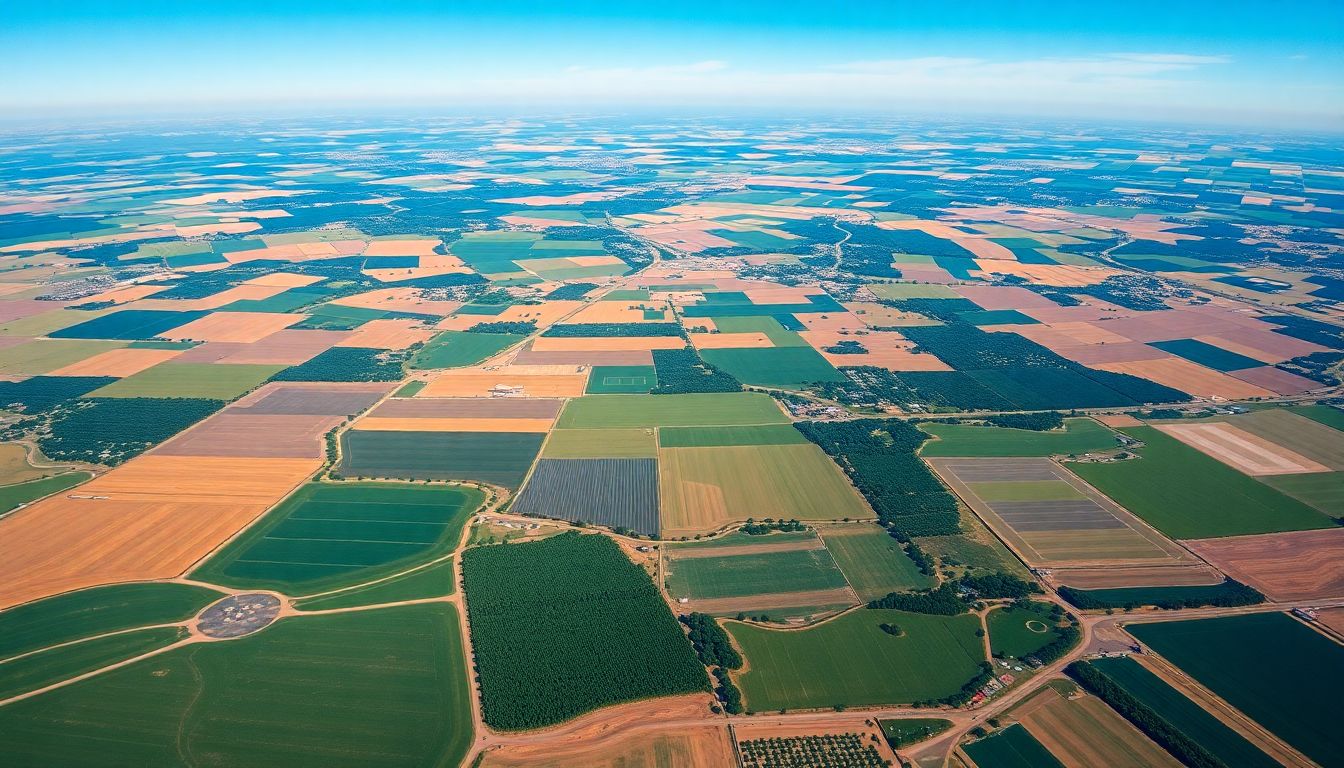Agricultural land in the US contributes a whole deal to the economic model of the nation and in its food chain. It is not just vast open fields and farms it is also the backbone of a nation feeding millions. Understanding how much land is used for farming helps understand the trends, investments, and policies toward farming. New data clearly show where half of America’s land belongs. For planning, conservation, and future growth efforts, this land needs accurate measurements.
The Current State of Agricultural Lands in the USA
Total Acreage of Agricultural Land
The USDA has estimated over 900 million acres of land in the America formations for agricultural purposes, which includes cropland, pasture, rangeland, and some forest land under agriculture relations. The largest part of his cropland is now leaving room for corn, soy, future fields, and pasture and rangeland mainly for grazing animals. Certain areas of the forest have been treated as timberland and farmlands.
General Distribution of Agriculture Land by States
Texas is one of the largest states in agriculture, the same as Kansas and Nebraska. Texas has over 130 million acres allocated to agriculture – all of this land has flat terrain, reasonable climate, rich soil for farming. The West has little cropland and more rangeland than the Midwest, which serves as the center for agricultural output.
Temporal Trends
The total agriculture land remains largely unchanged during the period, but some dynamic shuffling takes place because particularly such firm land has been given to urban development in certain locations. Climate change, too, is affecting the productive lands. Small farms are increasing or getting incorporated into large-scale operations. Generally, land-use patterns are influenced by changes in the economic and ecological parameters.
Types of Agricultural Land in the USA
Cropland
Cropland is land put aside for growing any type of crop, as indicated. This would include row crops followed by corn, soybeans, and wheat, as well as vegetables and fruits. Almost 400 million acres are termed cropland; the greatest areas by far are corn and soybeans, which are going to continue feeding Americans and exporting to the world over.
Pasture Lands and Rangelands
Most of the pasture land consists of cattle, sheep, and goats. Rangeland refers to much larger areas that generally are unfit for cropping. Some 700 million acres are in pasture and rangeland, largely in the western states. This land supports beef, sheep, and other livestock industries.
Forested Land Used for Agriculture
There are some forests that are very active in agricultural activities such as agroforestry, combining trees and crops. Although small medium-scale, about 160 acres are managing for timber and seeds to promo
Key Data Sources and Statistics on Agricultural Land in the US
USDA and NASS Reports
NASS is the principal source of land data under USDA. They gather data through survey instruments, satellite images, and field reports. Updates take place every year to furnish a more accurate picture of land use.
New Facts and Major Findings
For one cause or another, almost 900 million acres will be available for farming. The data shows that cropland is stable, but pasturelands have decreased slightly. The immediate satellite imagery-based land-change detection gives us a much better idea of trends.
Limitations and Challenges in Data Collection
Obtaining actual data on any land is a very difficult task since the land may be misclassified or has not been reported in time. The rapid change of land conditions due to climatic and anthropogenic factors has rendered measurement almost impossible. Nevertheless, the periodic update of the data available helps the policymakers to take appropriate decisions.
Effects of Agricultural Land Utilization on the Environment and Economy
Environmental Perspective
Farming has results on wildlife habitats and water resources and soil. The overuse and mismanagement of land lead to soil erosion and pollution. The integration of farming with nature stands as a primary potential way of conserving resources.
Economic Impacts
The billions of dollars per year worth of agricultural production engage millions of employments. Land use determines farm income, food prices, and economic health of rural development in America, which is already a chief part of the economy.
Policies and Land Conservation Programs
The Conservation Reserve Program and others pay producers for not working their land or for restoration of native habitat to assure productivity today while conserving resources. For the future.
Prospects and Challenges for Agricultural Lands in the U.S.
Possible Trends
Precision farming, GPS technology, and development in data technology shall enable farmers to harness land effectively. Urban sprawl still threatens farmlands; some key areas are being secured. The intelligent management of land will heighten productivity without wasting land and natural resources.
Challenges
Unpredictable weather patterns of climate change, including droughts and floods, damage fields. Soil erosion and water shortage could lead to unsustainability and eventual extinction of land resources. Farmers need to adopt new methods to survive and be productive.
Opportunities
Crop rotation and water conservation practices are sustainable agricultural practices which would increase the health of farmland. Innovations like smart irrigation systems and soil restoration can equate to proper utilising of the already existing farmland.
Final Thoughts: Learnings on the Entire Agriculture Land in the USA
It is said that America has about 900 million acres of land for agriculture. This vast expanse feeds the nation and has served as this resource; on the other hand, it must be well managed. While knowing the scale and use/input into land shapes smarter future growth and sustainability policy, it is critical that farmers, policymakers, and conservationists come together to manage and protect this life-giving resource. And this is how America can ensure the future of healthy, productive, and sustainable farming, basically.
